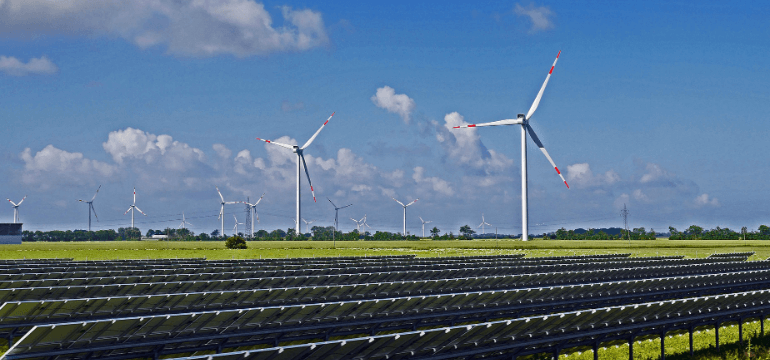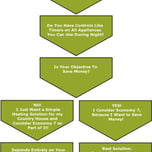- GreenMatch
- Blog
- Storage Solutions for Renewable Energy Resources
3 Groundbreaking Solar & Wind Storage Solutions
Distributed Energy Storage (DES for short) are modular, decentralised energy storage technologies. DES systems have great advantages over centralised distribution systems, and scaling up is rather flexible depending on the energy demand.
Distributed Energy Storage Systems from a Historical POV
There are plenty of good things about solar energy and wind energy, however, they do not generate energy at a constant rate because their output depends heavily on the weather. Even more so, a solar battery is a rather modern challenge. For example, windmills were traditionally used to pulver grain, pump water, or both. Where pulverised grain and water can be stored easily, this is not the case with electricity from renewable energy solutions: one of the disadvantages of solar power.
Intermittency and Overcapacity From Wind & Solar Resources
In 2015, China became the global wind power leader with an electricity generation of 145.1 GW for the year. However, their booming wind power industry is facing challenges with grid power constraints and shrinking electricity demand. As a result, in some regions, a huge amount of turbines have been curbed or end up unused. For example, Gansu province, an area in the north of China with 26 million inhabitants, curbed 39% of their wind capacity in 2015 resulting in vast economic losses.
Germany is currently dealing with overcapacity and discontinuity problems. Depending on the amplitude, electricity has often been transmitted to other areas, resulting in sudden waves of electricity that causes disruptions in the grid stability of neighbouring countries.
Australia has endured several hefty blackouts in the past year that have been caused by a shortage of available dispatchable backup sources. Although there is a lack of distributed energy resources, there has been a notable increase of discussion in regard to the implementation of these new technologies.
Power systems are designed for top-down power flow: generation → transmission → distribution → end users. With the attribution of local contributors to distributed storage technologies, fault effects in the electrical grid can become more severe and more difficult to isolate.

Distributed Energy Storage Technologies
Compressed Hydrogen Storage
Hydrogen has the highest energy per mass of any fuel; however, its low ambient temperature density results in a low energy per unit volume. Therefore, the short-term focus is on developing compressed gas storage using pressure thanks that perform well in a natural environment. The long-term outlook is rather different and will be focused on cold or cryo-compressed hydrogen storage that increases hydrogen density and allows for smaller storage solutions.
Moving from Lithium-Ion Batteries to Lithium-Sulfur Batteries
Lithium-Ion Batteries (Li-I batteries) have a regular storage capacity of 200W/kg, and Lithium-Sulfur Batteries (Li-S batteries) have a regular storage capacity of 500W/kg. Therefore, Li-S storage technology has a massive potential to be implemented in numerous industries. The challenge is to increase the efficiency of the Li-S batteries over a large number of charging cycles since a conventional Li-I battery will outperform a Li-S battery after approximately 100 charging cycles. The key issue of a Li-S battery is low electrical conductivity of the sulfur cathode. The current research is to find highly conductive cathodes.
Redox Flow Batteries
Redox Flow Batteries (RFB) store electricity as a chemical in two large tanks. Currently, RFB cannot compete with Li-I batteries, as the storage capacity of RFB’s is dramatically lower than Li-I Batteries. However, from an economic perspective, especially for larger capacities, RFB can be competitive compared to the Li-B. One major advantage is that a redox flow battery can be almost directly recharged by replacing the electrolyte liquid, while synchronously recovering the used material for re-energisation.
Futuristic Advancement in Renewable Energy Solutions
In Greifswald, Germany the Max Planck Institute of Plasma Physics has been developing an experimental stellarator. Finished in 2015, the “Wendelstein 7-X” has been predicted to achieve operations of up to 30 minutes of continuous hydrogen-based plasma discharge in 2021, thus demonstrating an essential feature of a fusion power plant.
The objective of the research is to show whether it is possible to actually produce energy with a stellarator reactor. The 'conventional' fusion reactor has a doughnut form, the W7-X has a coiled shape, which is much closer to the natural shape plasma prefers in the vacuum of space.
We strive to connect our customers with the right product and supplier. Would you like to be part of GreenMatch?




